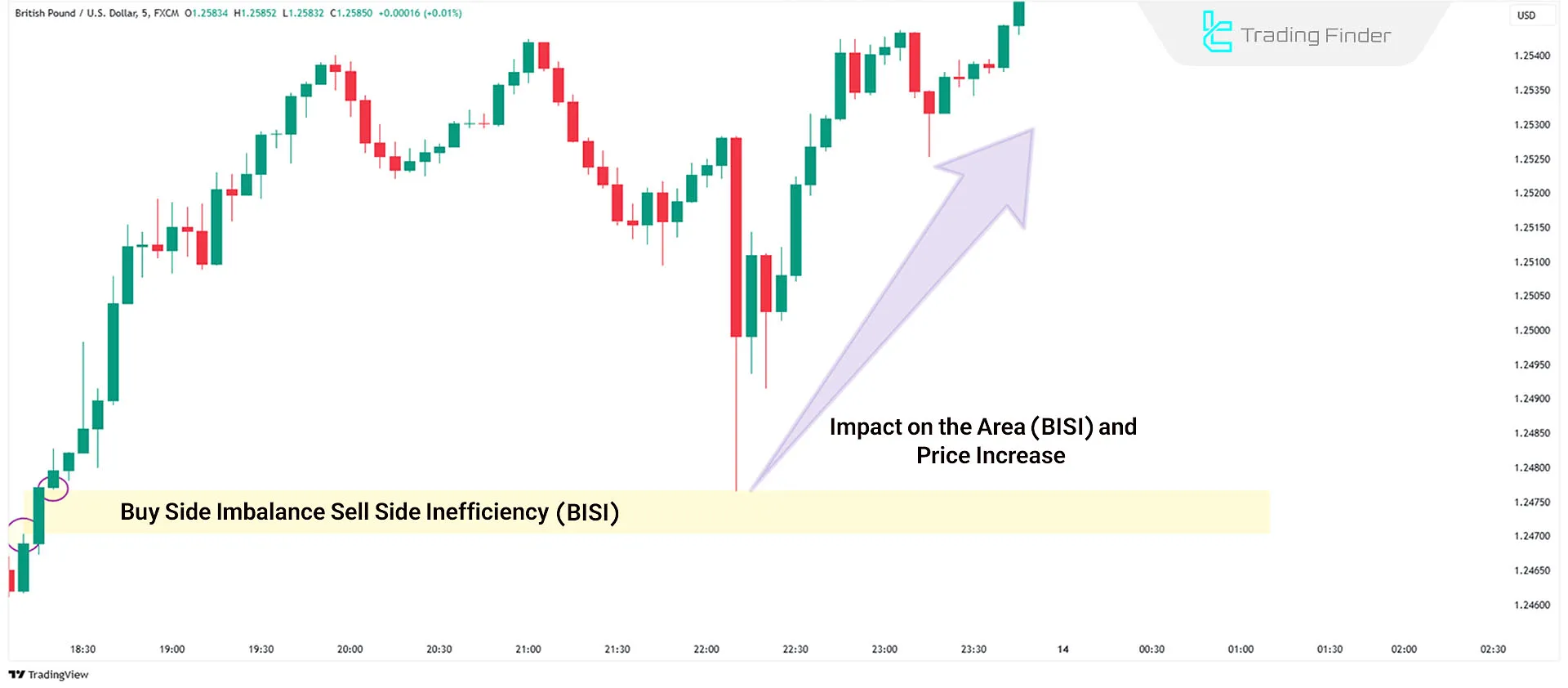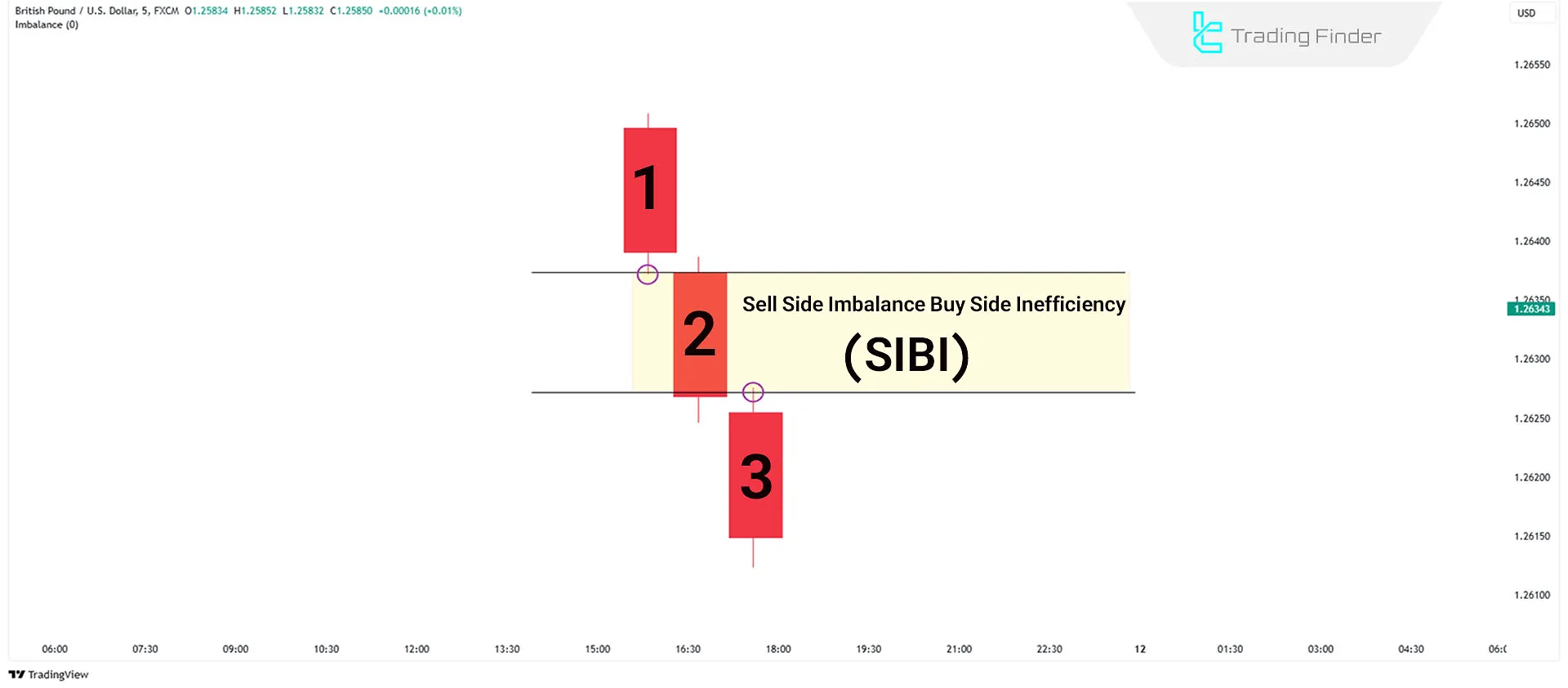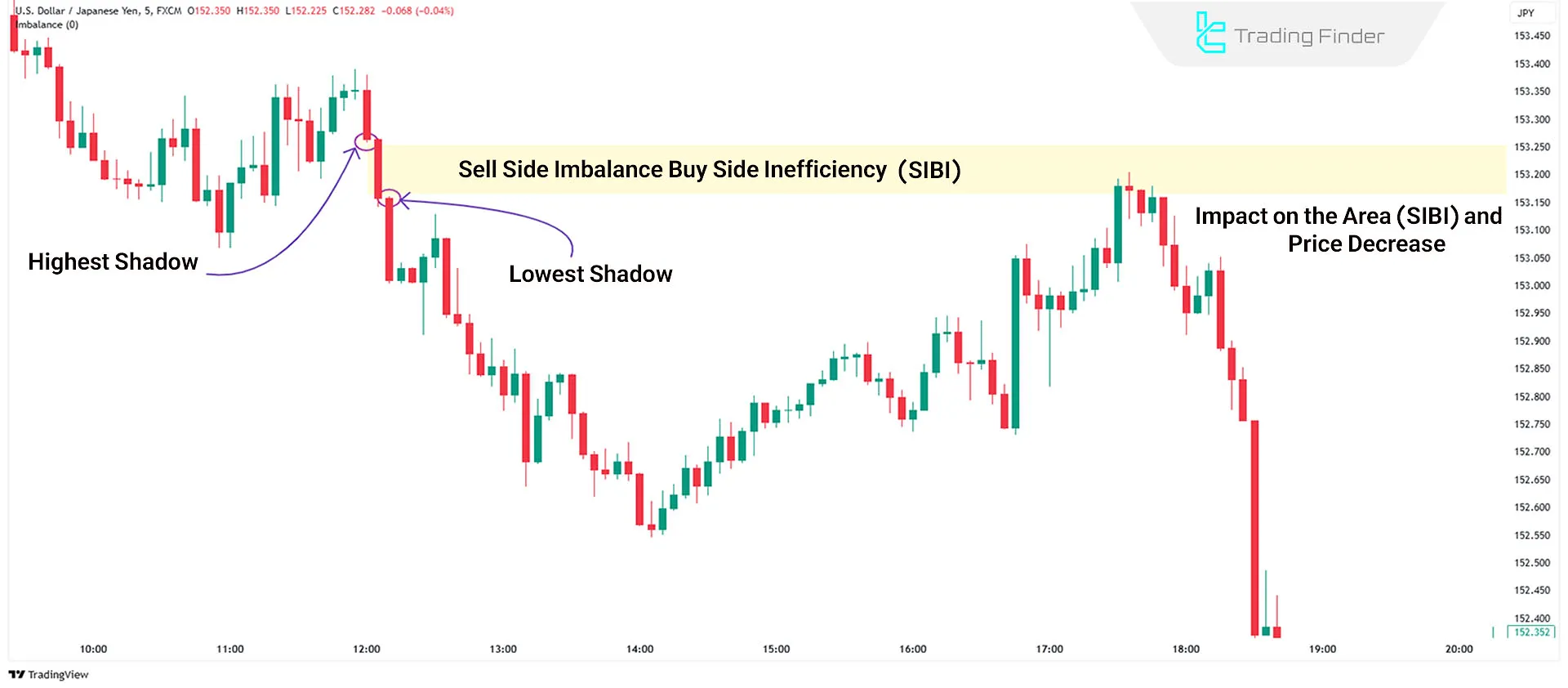Sell-Side Imbalance and Buy-Side Inefficiency (SIBI) and Buy-Side Imbalance and Sell-Side Inefficiency (BISI) in the ICT trading style are used to identify key market points and predict price movements.
These concepts are essentially Fair Value Gaps (FVG), forming strong bullish or bearish trends. Additionally, the first and third candlesticks align with the candle that contains the Fair Value Gap.

What are Buy-Side Imbalance and Sell-Side Inefficiency (BISI)?
Buy-Side Imbalance and Sell-Side Inefficiency (BISI) refers to a bullish gap that signifies strong buying pressure in the market.

BISI Structure Analysis
The BISI pattern consists of three candlesticks:
- The first candle has a large bullish body, indicating the start of strong buying pressure;
- The second candle continues the upward movement with a large body;
- The third candle extends the upward movement, creating a gap.
The gap is formed between the first candle's highest price and the third candle's lowest price. This structure signifies strong buying activity and a gradual decline in selling pressure.
How to Trade Using BISI?
Trading with BISI starts with identifying the pattern. The first candle must be large and bullish, the second candle should continue the upward movement, and the third must create a gap. After spotting the gap, traders can confirm the buying pressure and enter a long position.

What is Sell-Side Imbalance and Buy-Side Inefficiency (SIBI)?
Sell-Side Imbalance and Buy-Side Inefficiency (SIBI) is a bearish gap that signifies strong selling pressure.

SIBI Structure Analysis
The SIBI pattern consists of three candlesticks:
- The first candle has a large bearish body, indicating the start of strong selling pressure;
- The second candle continues the downward movement with a large body;
- The third candle extends the downward movement, creating a gap.
The gap is formed between the first candle's lowest price and the third candle's highest price. This structure signifies strong selling activity and a gradual decline in buying pressure.
How to Trade Using SIBI?
To trade with SIBI, the pattern must first be identified. The first candle should have a large bearish body, the second candle should confirm the bearish trend, and the third candle must create a gap, reflecting the continuation of the downward movement.
Once this gap is confirmed, traders can enter a short position, placing their stop-loss above the high of the third candle to manage risk.

Comparison of SIBI and BISI
The table below presents a comparison of Buy-Side and Sell-Side Imbalance and Inefficiency:
Parameters | Buy-Side Imbalance & Sell-Side Inefficiency (BISI) | Sell-Side Imbalance & Buy-Side Inefficiency (SIBI) |
Momentum | Dominant buying pressure | Dominant selling pressure |
Function | Acts as support | Acts as resistance |
Key Considerations for Using SIBI & BISI
Key important points for using SIBI and BISI include the following:
- Combine SIBI and BISI with other technical tools like Order Blocks to improve accuracy;
- Use stop-loss and take-profit levels for risk management;
- Always wait for confirmation, such as market structure shifts or strong price action signals.
What is the Difference Between SIBI/BISI and Fair Value Gaps (FVG)?
The main differences between SIBI/BISI and Fair Value Gaps (FVG) are structure and trend strength.
- SIBI and BISI occur in strong trends, while FVG represents a temporary imbalance caused by supply and demand differences;
- In SIBI and BISI, both the first and third candles align with the trend, whereas in FVG, this alignment is not always present.
Conclusion
The concepts of SIBI and BISI in the ICT trading style help traders identify price imbalance zones, which act as key areas for trade entries and exits. Although similar to Fair Value Gaps (FVG), SIBI and BISI occur in strong trends with two same-direction candlesticks on either side.





